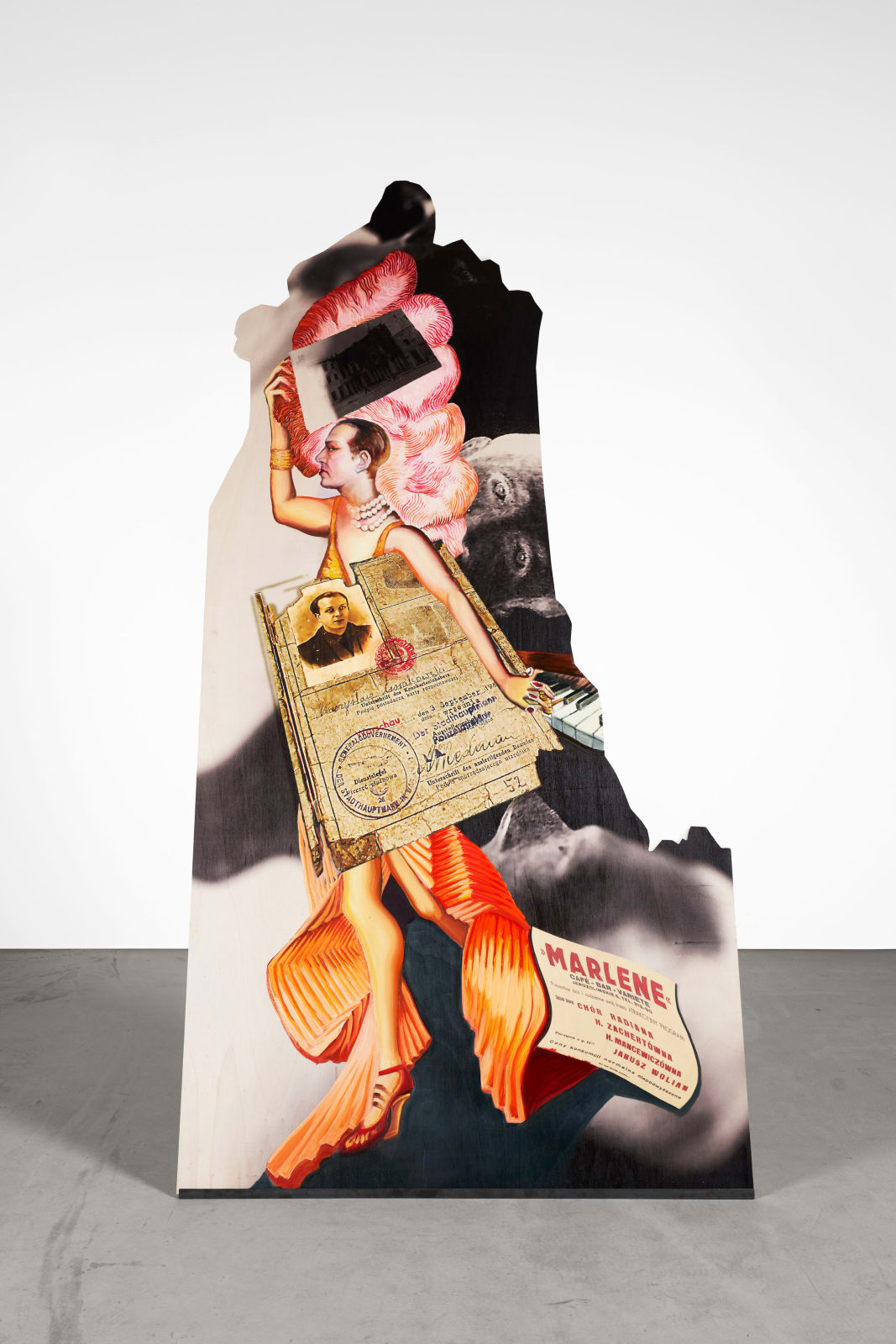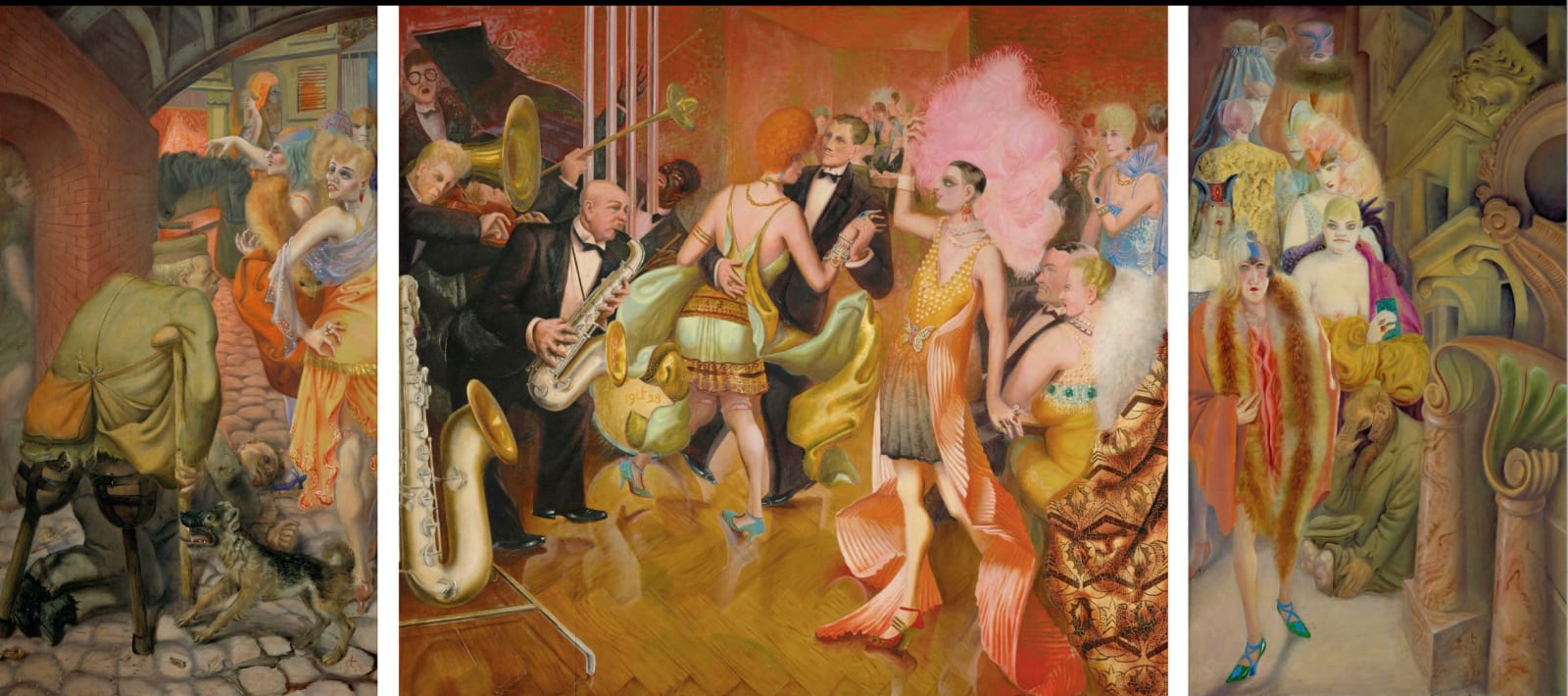-
Artworks
Open a larger version of the following image in a popup: Installation view "Mikolaj Sobczak. Impossible Songs", Jester | Flanders Arts Institute, Genk, 2024.
Open a larger version of the following image in a popup:
Installation view "Mikolaj Sobczak. Impossible Songs", Jester | Flanders Arts Institute, Genk, 2024.
Open a larger version of the following image in a popup: Otto Dix, ‘Großstadt (Metropolis)’, 1927-1928, Painting, Wood, distemper, Art Resource
Page 1 of 4
Otto Dix, ‘Großstadt (Metropolis)’, 1927-1928, Painting, Wood, distemper, Art Resource
Page 1 of 4
Page 1 of 4
About the work
Articles
Materials
Wood, distemper
Size
71 3/10 × 159 1/10 in | 181 × 404 cm
Medium
Painting
Image rights
Erich Lessing / Art Resource, NY / Dix, Otto (1891-1969) © ARS, NY
OD
OD
Otto Dix
German, 1891–1969
Follow
In his Expressionist prints and paintings, Otto Dix immortalized the unprecedented horrors of World War I and its crippling aftereffects on life in Berlin. Anguish radiates from Dix’s desolate landscapes of military trenches filled with barely distinguishable, decaying human remains, the legacy of the first industrialized war, while images of poor, disfigured, and lonely veterans invisible to passersby on the streets were comments on war’s unequal impact on different societal groups. Exploitation is also the theme of his “Femme Fatale” paintings, criticizing the narcissism that drove women to work the system in attempt to outdo one another—a representation of the social turmoil at the time. Along with George Grosz, Dix is widely considered one of the most important artists of the Neue Sachlichkeit (“New Objectivity”), a term used to characterize the turn of public attitudes in Weimar Germany toward the practical and functional and the art the emerged from it.
High auction record
£3.3m, Sotheby's, 1999
Established
Represented by industry leading galleries.
Collected by a major museum
Museum of Modern Art (MoMA)|Centre Pompidou|The Metropolitan Museum of Art|National Gallery of Art, Washington, D.C.|Dallas Museum of Art|Art Institute of Chicago|Moderna Museet, Stockholm
Selected exhibitions
2018
Magic Realism: Art in Weimar Germany 1919-33, Tate
2016
Modern Masters: Degenerate Art at the Museum of Fine Arts Bern, Kunstmuseum Bern
2015
New Objectivity: Modern German Art in the Weimar Republic, 1919–1933, Los Angeles County Museum of Art
View all
AR
Art Resource
New York
Otto Dix, Großstadt (Metropolis), 1927-1928Mikołaj Sobczak
Alex, 2024In collaboration with Tom Alon
Oil, print on wood, disassembled metal stand250 x 122 x 100 cm
98.4 x 48 x 39.4 inches
B-MSOBCZAK-.24-0024Further images
Alex was born in 1906 in the Lublin region and lived for 65 years. He escaped binary gender patterns and openly performed his otherness. He wore high heels, makeup, and...Alex was born in 1906 in the Lublin region and lived for 65 years. He escaped binary gender patterns and openly performed his otherness. He wore high heels, makeup, and often “feminine” clothes. Court and police records show that he used male pronouns and the term “homosexual”, but he might have used different gendered forms when speaking in his daily life. He was tried and sentenced to prison many times due to his sexual identity in Lublin and Warsaw before and during World War II. He actively participated in the life of is visible on the panel) and, after its bombing, in a restaurant in Warsaw.
The document reproduced here was stolen by Alex from someone named Mieczysław, a citizen with no criminal record, to be adopted as his identity card. Throughout his life, Alex explored many passions and talents. He is shown playing the piano using a weight to push one of the keys, a reference to his experience as a student of commerce in Antwerp and of music in Warsaw.
The artist borrows the characters of the triptych Großstadt (Metropolis) by Otto Dix to pay homage to the fantastical outfits he presumably has worn during his legendary parties.Exhibitions
Mikołaj Sobczak, Le Boudoir de l'Amour, Capitain Petzel, Berlin, 2024
"Mikolaj Sobczak. Impossible Songs", Jester | Flanders Arts Institute, Genk, 2024.2of 2











